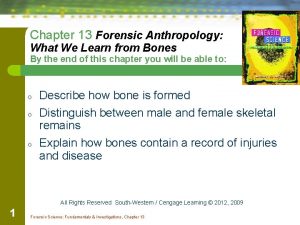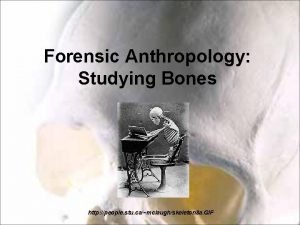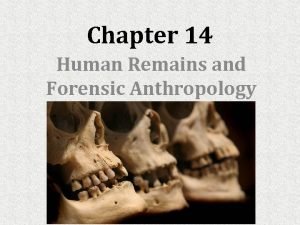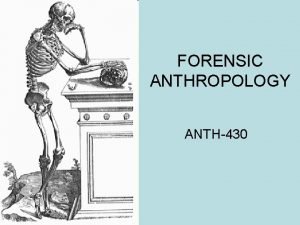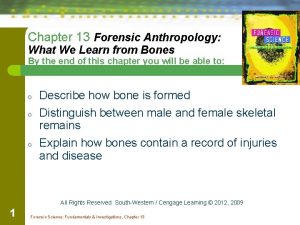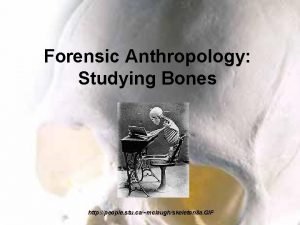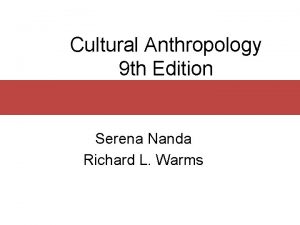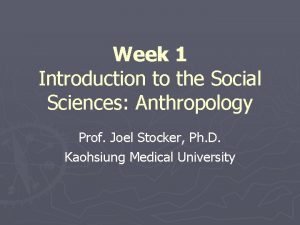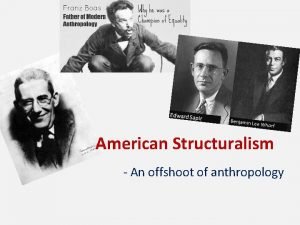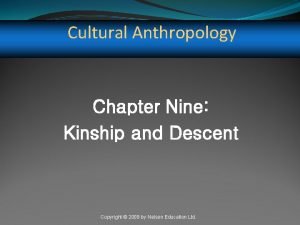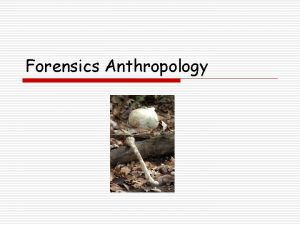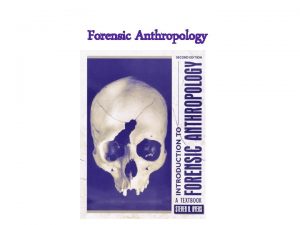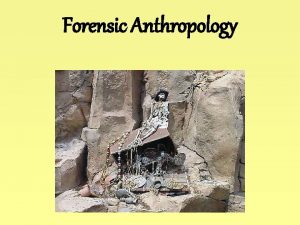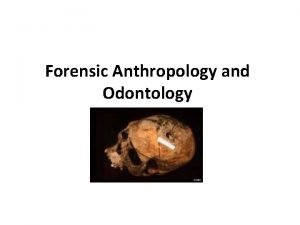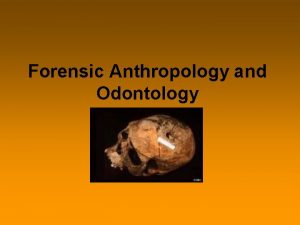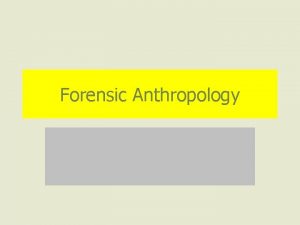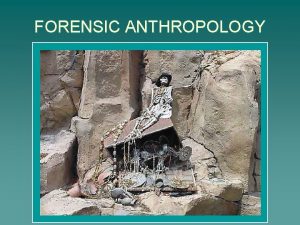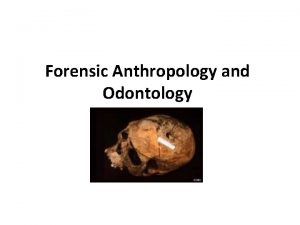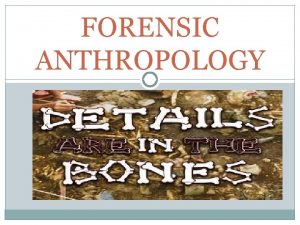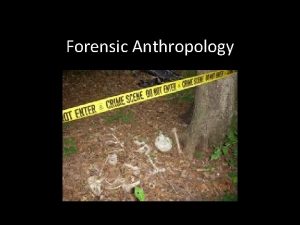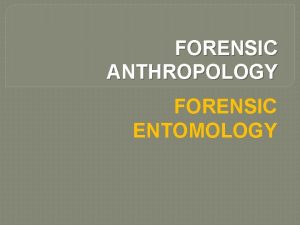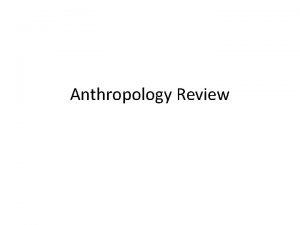Forensic Anthropology Forensic Anthropology What is Forensic Anthropology
















- Slides: 16

Forensic Anthropology

Forensic Anthropology What is Forensic Anthropology? • Generally speaking forensic anthropology is the examination of human skeletal remains to determine identity and present findings in courts of law. • Other duties of a Forensic Anthropologist: Assist in the recovery of bodies in mass disasters Experts in constructing facial features over a skull Superimpose a face on a skull using computer or digital camera Facial and body recognition of people in crowds

Case of Adolph Luetgert. Chicago’s “Sausage King” 1897 o First U. S. case to involve an expert Forensic Anthropologist (George Dorsey- curator of the Field Museum of Natural History in Chicago o http: //murderpedia. org/male. L/l/luet gert-adolph. htm

Forensic Anthropology What questions could Forensic Anthropologists ask? • Are the bones human? • Was this person male or female? • How old were they when they died? • How tall were they? • Was the person in good health at the time of death? • Was the person right handed or left handed?

Forensic Anthropology How do Forensic Anthropologist aide law enforcement? • Through the established methods, a forensic anthropologist can aid law enforcement in establishing a profile on the unidentified remains. • The profile includes sex, age, ethnicity, height, length of time since death, and sometimes the evaluation of trauma seen on bones.

Forensic Anthropology Is the bone human? • A human adult has 206 bones. • Since many animal bones look similar to ours, often it takes an anthropologist to determine if the bones in question are human.

Forensic Anthropology • Which is the human femur bone? A Chimpanzee B C Human T-Rex D Great Dane

Forensic Anthropology Was the person male or female? One way to determine the sex is to examine the pelvis. The interior of the pelvis is wider in women. Male The sciatic notch is narrow. Female The sciatic notch is wide. To allow for child birth. It can even be determined how many natural births a woman has had!!!!

Forensic Anthropology The skull is also useful in determining sex. Male Female • Supraorbital Notch (eye socket): softer in women. • Zygomatic Arch (above jaw): prominent in men. • Mandible (jaw) : square for men, soft for women. • Supercilary Arch (eye brow): ridged in men.

Forensics Anthropology How old was the person at time of death? • Teeth – come in at common intervals. • example: wisdom teeth. • Fusion of epiphysis – femur and other long bones. • Clavicle (20 – 30 yrs) – cartilage to bone.

Forensic Anthropology • Pubic Symphysis – Throughout life, the surfaces of the pubic symphysis are worn at a more or less predictable rate. By examining the wear of the pubic symphysis, it is possible to estimate the age of the person at death

Forensic Anthropology • Skull Sutures – Fusing of the skull over time. child adult

Forensic Anthropology How tall was the person? • By using bones we can get a rather accurate estimate of a person height. Female tibia (cm) x 2. 53 + 72. 57 = height (cm) radius (cm) x 3. 87 + 73. 50 = height (cm) Male tibia (cm) x 2. 39 + 81. 68 = height (cm) radius (cm) x 3. 65 + 80. 40 = height (cm) • Example: A 41. 3 cm Caucasoid male tibia was found in a wooded area. How tall was the this person? 41. 3 cm x 2. 39 + 81. 68 = 180 cm (5’-11”)

Forensics Anthropology So, who was the person? • DNA can be taken from bone cells and marrow. • Dental records (odontology) can ID a person. As well as unique bite marks. • Unique breaks and illnesses can be detected from skeletal remains. • Occupation can be reasonable determined. Heavy labor causes bones to become larger. • We can also determine if a person was right or left handed.

Forensics Anthropology Are the bones from a crime? • Look for bullet holes or fractures. • Impressions from weapons are made in bones. stone tool marks on animal bone

Forensic Anthropology Facial Reconstruction Copernicus
 Chapter 13 forensic anthropology
Chapter 13 forensic anthropology Nasal silling guttering
Nasal silling guttering Chapter 14 review forensic science
Chapter 14 review forensic science Forensic anthropology data bank
Forensic anthropology data bank Forensic anthropology
Forensic anthropology Chapter 13 forensic anthropology
Chapter 13 forensic anthropology Race determination from teeth
Race determination from teeth Forensic anthropologist vs forensic pathologist
Forensic anthropologist vs forensic pathologist Who is this
Who is this Cultural anthropology examples
Cultural anthropology examples Perspective and examples of anthropology
Perspective and examples of anthropology Introduction to anthropology psychology and sociology
Introduction to anthropology psychology and sociology What is anthropology
What is anthropology Doctrine of anthropology
Doctrine of anthropology American structuralism linguistics
American structuralism linguistics Double descent anthropology
Double descent anthropology Forensics anthropology
Forensics anthropology
